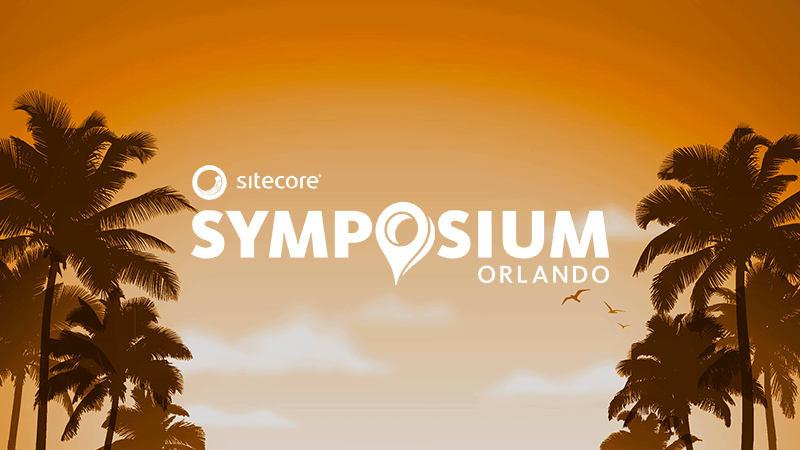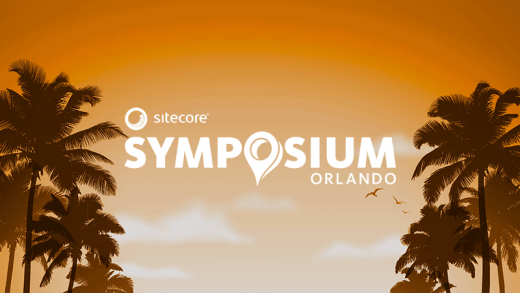Sitecore delivers product news against a shifting business landscape
Sitecore talks product at Symposium against a background of how brands must learn to survive.

Product news released at the virtual Sitecore Symposium today recognized the need for brands to get started quickly and easily with personalization in this period where accelerated digital transformation meets increased consumer demand for relevant experiences.
As Sitecore CMO Paige O’Neill said in her keynote, “Customer expectations are shifting once again from under us.” She called for “moment to moment” customer experience, and a new mindset focused on empathy.
Product news. Sitecore AI Auto Personalization Standard will be available out-of-the-box in early 2021. It will allow Sitecore users to begin personalizing content without the need to manually define segments, and with no traffic minimum required. It will enable automated personalization around images, text and CTAs, and will offer real-time visibility into personalization peformance.
Also available early next year, Sitecore Content as a Service, built on the Content Hub, will provide centralized planning and collaboration tools
and an ability to deliver content over APIs to any channel. “Content strategy is critical,” said O’Neill, “and becoming more so.”
Reinforcing the concepts of personalization and empathy, and how technology and a content strategy support them, may seem an obvious line to take. The stronger message, however, is that these are no longer nice to-haves, or options for growing revenue. They are critical to survival.
Brand resilience. That’s the message Vijayanta Gupta, Sitecore’s GVP, Product Marketing delivered in an in-depth conversation with MarTech Today (he also presented his research on brand resilience at Symposium today). “I’m passionate about how brands survive year over year,” he said, “and what we’re going through with COVID means that some brands we are familiar with are struggling financially, or are not going to survive.”
Brands don’t miss big changes, he explained. No brand, for example, has “missed” COVID; what they can miss are tectonic shifts — deeper trends that threaten to disrupt their business. Gupta’s historic example is Kodak, which understood the demand for small digital cameras, but didn’t recognize that consumers were evolving towards one device (phone/camera combined).
Gupta identifies five trends today which brands need to focus on if they are to remain resilient.
Purposeful capitalism. “There’s a groundswell of opinion around the world that capitalism has not served the purpose of every stakeholder,” he said. There is a move to change capitalism from the inside so that brands serve not only shareholders, but other stakeholders like customers, employees, society and the environment.
Consumers will now engage with brands that are environmentally and socially responsible. Gupta sees billions of dollars investment, just this year, shifting to ESG funds (funds which integrate environmental, social and governance factors into the investment process). Brands must show that they serve a purpose in society and are willing to invest back into it.
Non-linear lives. “We have all grown up thinking of life as being linear. You are born, you get educated, you join a job, you retire, you die,” said Gupta. The trend that has emerged in the last few years, and accelerated under COVID, is many people choosing a non-linear life: taking years off, moving between part-time and full-time employment, and moving into advisory roles or charity work, for example, rather than retiring.
The importance for brands is that traditional LTV models and customer life-cycle predictions become irrelevant when consumers switch to non-linear lifestyles — a trend which goes hand-in-hand with the subscription economy, and people no longer actually owning things like homes and cars.
Customer ubiquity. “Traditionally,” brands have looked at the world in a very myopic manner,” said Gupta, “dividing into developed and developing. They’ve chosen to serve the developed world in one way, and the developing world in another way.” Many, indeed, have chosen not to serve the latter.
This model is no longer valid. Today, the brands consumers engage with and aspire to vary based on income, not region, Guptga explained. “Customers do not think of themselves as living in developed or developing economies, and brands shouldn’t either. If they do, they miss out on a very large customer base.
Privacy. “We are surrounded by connected devices, 30 to 50 billion in the world today depending on which research you believe. We don’t need to be using these devices for these devices to be using us. For example, I’m not looking at my smartwatch, but it’s calculating my heart rate, my oxygen level, etc.” This environment, said Gupta, prompts a new paradigm of privacy: namely, that brands I engage with should not be using my information for things I haven’t been told about.”
Brands which don’t respect such limits fall into the bucket of “surveillance capitalism,” an “extremely damaging tag,” said Gupta. “It’s a matter of just one slip up.” Resilient brands will be those that understand that access to personal data comes with responsibility. Privacy has become a critical brand promise.
AI. “If you look at how digital engagement across channels is scaling, the question is not whether brands will use [AI] algorithms to scale engagement, but when they will start,” Gupta said. “Many of them are already using auto-personalization like Sitecore provides, but that comes with a challenge: sometimes algorithms have biases.”
People aren’t consciously creating biased algorithms, of course — the algorithms feed on data, and the data is itself biased. The bias is amplified when the algorithm operates at scale. Resilient brands will find a balance between using AI to scale digital experiences while putting the governance in place to ensure biases are detected early on.
Why we care. A scientist once remarked, “The map is not the territory.” In martech, product road-maps can no longer reflect just the vendor’s capabilities and key customers’ needs. It must respond to the territory — the terra incognita — we are all traversing; the tectonic shifts which are underway.
This story first appeared on MarTech Today.
Marketing Land – Internet Marketing News, Strategies & Tips
(17)



